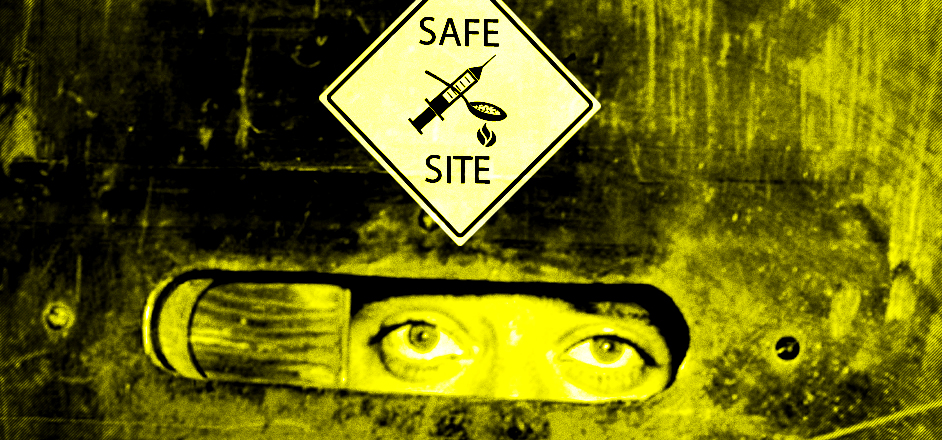Though they're kept quiet, underground heroin injection sites have existed for years, safer places to get bent.
In the middle of an overdose epidemic that's killing like a plague, rebels have been building spots for opioid users to stick a needle in their veins and not die, because someone has clean needles and waits nearby with the antidote, naloxone.
They're almost like speakeasies for opioid users: you have to know a guy, learn the secret password and shut up about it.
Shilo Jama is director of the Peoples Harm Reduction Alliance in the Pacific Northwest, which delivers clean needles. He thinks there's an underground safe consumption site in every single major city in the country.
He's seen some of them. One apartment they deliver to is halfway to being a clinic. Five people live there; a couple dozen of their friends shoot up there. They take shifts staying sober enough to look after the nodders. If someone ODs, they’ll shoot a spray of naloxone up their nose. They stock up on naloxone at Walgreens, buying bottles for about $40 a pop.
"Is that a safe consumption site?" Jama asked, rhetorically. "It's a safer consumption site."
You may have read that do-gooder nonprofit organizations are trying to open official "supervised consumption sites." There are already 100 in the world, but none here in America. A few cities are daring to ignore the DEA and work toward opening one, including Denver, San Francisco and Seattle.
Building a supervised injection site, though, you need permits, city council ok, statehouse say-so, and fancy lawyers in Washington.
So people have been saying: forget all that. Let's just build safe consumption sites ourselves. Who cares what the government thinks?
In the '90s, when Jama was on the streets, there was a shooting gallery — as injections sites are sometimes called — with a Vietnam vet EMT who could patch up people's wounds. "It wasn't a 501c3 public health department sponsored site," Jama said. "But that was the safest place I could have used."
There are other indicators of the existence of these kinds of places. DanceSafe, which usually works to test molly at raves, sells strips to test drugs for the existence of fentanyl, a deadly heroin substitute. Mitchell Gomez, DanceSafe outreach director, says he suspects that when someone buys 1,000 fentanyl test strips, it's not going for personal use; it's going to a drug den.
All of this is safer than what tends to happen now. Once they've found their plug and copped their diesel, strugglers, smackheads and dope fiends search for a spot to get well and dodge withdrawal. They needle up in alleys, apartments and bathrooms. If they draw up too much, or mix it wrong, they add their name to the list of 60,000 people who die from overdoses annually, a Vietnam War's worth of American corpses every single year.
These underground, unsupervised, unknown drug dens work. There is at least one underground site that's basically as nice as one a health department would build. It's existed for three years. Two researchers studied it. They won't say where it is.

It's two rooms. One room has five small tables with stools for the stick. The other room has a place for chilling, while the staff keeps an eye on folks to see if they croak. More than 100 people used the room over two years, injecting 2,500 times. No one died.
Voices like Jama’s are rising, saying, let's just do this in our town, and screw Washington.
Denver's Randy Chase was also saying that loud and clear. Chase works as a laborer, and has done time for drugs, he said. He's heard about an apartment in Denver set up with access to clean needles and naloxone. At a recent meeting in Denver about supervised injection sites, he was pushing leaders to just do it. "The cops aren't going to care, the city's not going to care," he said. "It could totally happen."




Leave a Reply